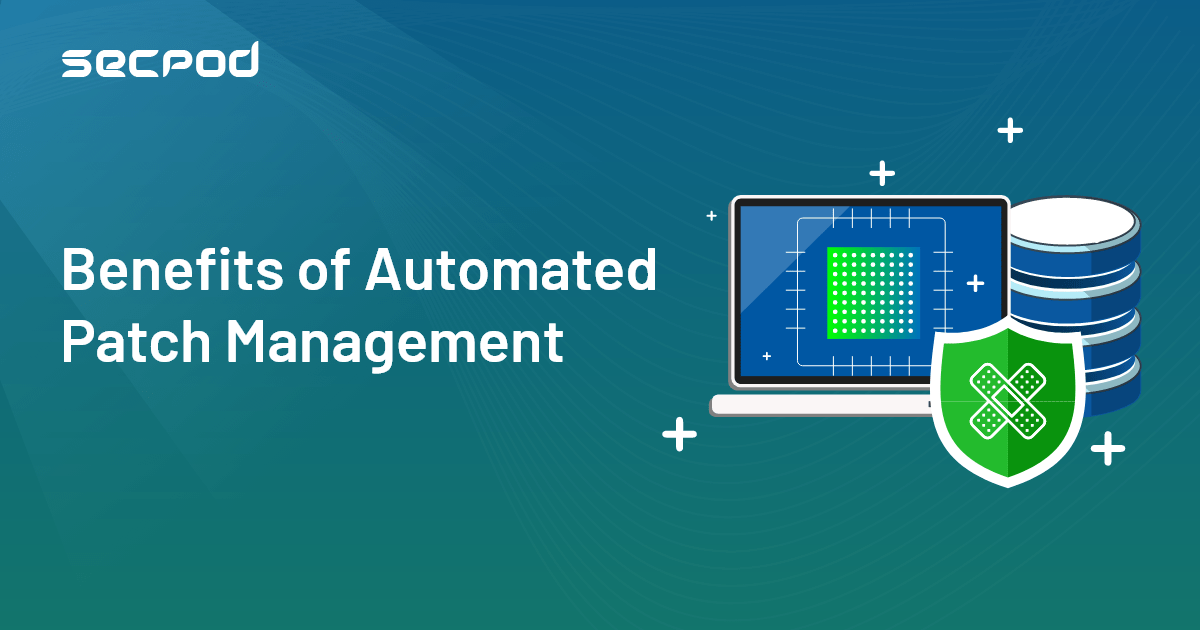As more employees are working remotely and IT structures have moved to the cloud, cyber-attacks have also become more sophisticated. Senior executives are concerned about data security and looking for ways to improve their organization’s security posture. More than ever, patch management is now the key to reducing cyber threats. One of the best ways to cater to this is automated patch management software. Not only does it reduce the burden of manually patching from time to time, but it also eases the process of patching multiple operating systems, third-party applications and provides detailed reporting. It also saves time, resources, and finances while improving security.
Let’s look at some of the benefits of automated patch management tool and the risks associated with it.
Benefits of Automated Patch Management:
1. Security
It is the main reason why companies want an automated patch management solution. One of the reasons for releasing patch updates is fixing security vulnerabilities in a system that can otherwise be exploited by malicious people or software that intends to disrupt and damage your system.
By applying security patches on time, there is a high chance of preventing security breaches from occurring, along with all other issues that arise from a breach, such as data loss and theft, reputational damage, or legal penalty.
2. Employee Productivity
A system with automated patch updates helps boost productivity within the workspace. Patches often introduce fixes to vulnerabilities in the previous versions or improve a program’s performance. Manual patching can be hard and troublesome for some employees. When they don’t have to worry about such issues, it saves them time and improves productivity.
Moreover, in many data breach incidents, it’s not only the sensitive stolen data that results in losses. Many times, it is the downtime after a breach incident that adversely affects productivity at the workplace. This effect can be a system that slows down due to malware activity, a congested network, a breakdown of applications critical to the business, or completely compromised systems that need reinstalling.
3. Productivity of IT Department
Productivity in terms of the IT department as a result of automated patch management measuring easily. If we calculate the number of people and time required to manually patch the systems and then compare it with the time and resources saved using an automated system, we can measure the benefit in terms of productivity. For companies with larger networks of more than 25 to 30 computers, the time and resources required for patching are so high that many companies either don’t do it or perform patching only on limited critical systems.
4. Compliance
Different security standards now obligate organizations from different industries to comply with their regulations. More regulations and laws now impose best practices on companies, and having fully patches systems is one of the requirements of all security frameworks.
Particularly for financial, healthcare, and government industries, these regulations are now almost mandatory to comply with. Some of these standards include Health Insurance Portability and Accountability Act (HIPAA) for healthcare, Payment Card Industry Data Security Standard (PCI DSS) for financial sector and payment card companies, ISO 27001, General Data Production Regulation (GDPR), and Family Educational Right and Privacy Act (FEBRA), etc. in general.
Failing to comply with these can result in legal consequences, financial penalties, losing opportunities, or even lose the business.
5. Staying Updated with New Features
Patches not only enhance security they also provide extended functionality with new features and support for other platforms. For organizations, this means that they can find new opportunities and improve their services.
About the author:
David Smith is a Certified Information Systems Security Professional (CISSP) specialized in Network and IoT Security and has spent most of his career in the APAC region. He has recently relocated from Shenzhen to San Francisco to be closer to his family.

